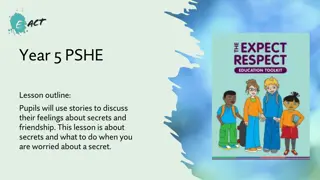Help Nature - Internationalist English Lesson
In this lesson, discover the importance of conservation efforts and the impact of extinction on biodiversity. Engage in activities like speaking, quizzes, and vocabulary enrichment to deepen your understanding of our planet's ecosystems.
Download Presentation

Please find below an Image/Link to download the presentation.
The content on the website is provided AS IS for your information and personal use only. It may not be sold, licensed, or shared on other websites without obtaining consent from the author.If you encounter any issues during the download, it is possible that the publisher has removed the file from their server.
You are allowed to download the files provided on this website for personal or commercial use, subject to the condition that they are used lawfully. All files are the property of their respective owners.
The content on the website is provided AS IS for your information and personal use only. It may not be sold, licensed, or shared on other websites without obtaining consent from the author.
E N D
Presentation Transcript
Help nature! New Internationalist Easier English Ready Lesson: Pre-Intermediate level
This lesson: Speaking Quiz Reading / gap-fill Vocabulary Organising and ordering words Making protest banners
What problems can you see? How can we help?
Quiz 1. There were 2000 Indian tigers in 1970 how many are there now? a) 3000 b) 2000 c) 1000 2. How many years have humans lived on Earth? a) 3,000,000 b) 300,000 c) 30,000 3. When was the extinction of dinosaurs? a) 650 million years ago b) 65 million years ago c) 6.5 million years ago
Now find the correct answers here: India s tiger numbers were fewer than 2,000 in 1970 and now up to about 3,000 as a result of a big conservation effort. We homo sapiens have lived only 300,000 years on the planet. And the dinosaurs were gone 65 million years ago. Extinction is the beginning of a bigger global problem. There are many more of the animals that humans eat. But wildlife is undergoing, what conservationists are calling, a biological collapse. In the short time between 1970 and 2016 the global population of wild mammals, birds, fish, amphibians, and reptiles fell by an amazing 68 per cent.
Match: a)cats, cows and camels b)frogs and toads c)snakes, turtles and lizards d)when the last of a species dies e)looking after the natural world so it can continue f) the animals that naturally live in an area g)a breakdown, destroying everything 1. extinction 2. conservation 3. collapse 4. wildlife 5. mammals 6. amphibians 7. reptiles
Match: a)cats, cows and camels b)frogs and toads c)snakes, turtles and lizards d)when the last of a species dies e)looking after the natural world so it can continue f) the animals that naturally live in an area g)a breakdown, destroying everything 1. extinction d 2. conservation e 3. collapse g 4. wildlife f 5. mammals a 6. amphibians b 7. reptiles c
Fill the gaps with these words: extinct / million / change / extinction / We think the number of all species facing extinction is one .a . Scientists say the extinction threat is as urgent as climate ..b . and in a way worse because we cannot change .c . When a species is gone, it s gone for ever. With it goes all its evolutionary adaptation to its living conditions, over millions of years, and all its interactions with its ecosystem. Species are closely connected to their ecosystem and so the extinction of one species can start more extinctions, making nature poorer and poorer. Extinction, by itself, is not new it has happened since life began on Earth. But now it is faster. The fossil record suggests that maybe a vertebrate species goes d .. in one to three million years. Today the average expected lifespan is only 5,000 years. Plant extinction is 500 times faster than we expect naturally.
Which are problems and which are solutions?: (you can use a dictionary if you need to / the word stress is underlined) a) biodiversity b) conservation c) drought d) big agriculture businesses e) ecosystem f) climate change g) adaptation h) extinction i) high temperatures j) mining g) indigenous people
What can we do? SOLUTIONS: PROBLEMS: climate change extinction drought high temperatures big agriculture businesses mining biodiversity adaptation ecosystem indigenous people
Conservation problems: match a)so they need to move to higher land very quickly 1. Elephants in the Congo rainforest 2. Insect-eating birds in the Amazon b) because of drought (no rain). 3. Many animals and plants cannot survive in hot temperatures c) have difficulties finding fruit because of less rain. 4. About 40% of the Amazon d) are dying because the heat is killing the insects they need. rainforest is becoming grassland
What can we do? have difficulties finding fruit because of less rain. 1. Elephants in the Congo rain- forest are dying because the heat is killing the insects they need. 2. Insect-eating birds in the Amazon 3. Many animals and plants cannot so they need to move to higher land very quickly. survive in hot temperatures because of drought (no rain). 4. About 40% of the Amazon rainforest is becoming grassland
Make protest banners by ordering these words: a)trees cutting stop ! b)elephants the protect ! c)less meat eat ! less farming for use land! d)destroying nature stop mines for !
Practise saying these organise a protest! Stop cutting trees! Protect the elephants! Eat less meat! Use less land for farming! Stop destroying nature for mines!
Now read this Easier English article and find ideas for 2 more protest banners: https://eewiki.newint.org/index.php?titl e=The_case_for_nature























